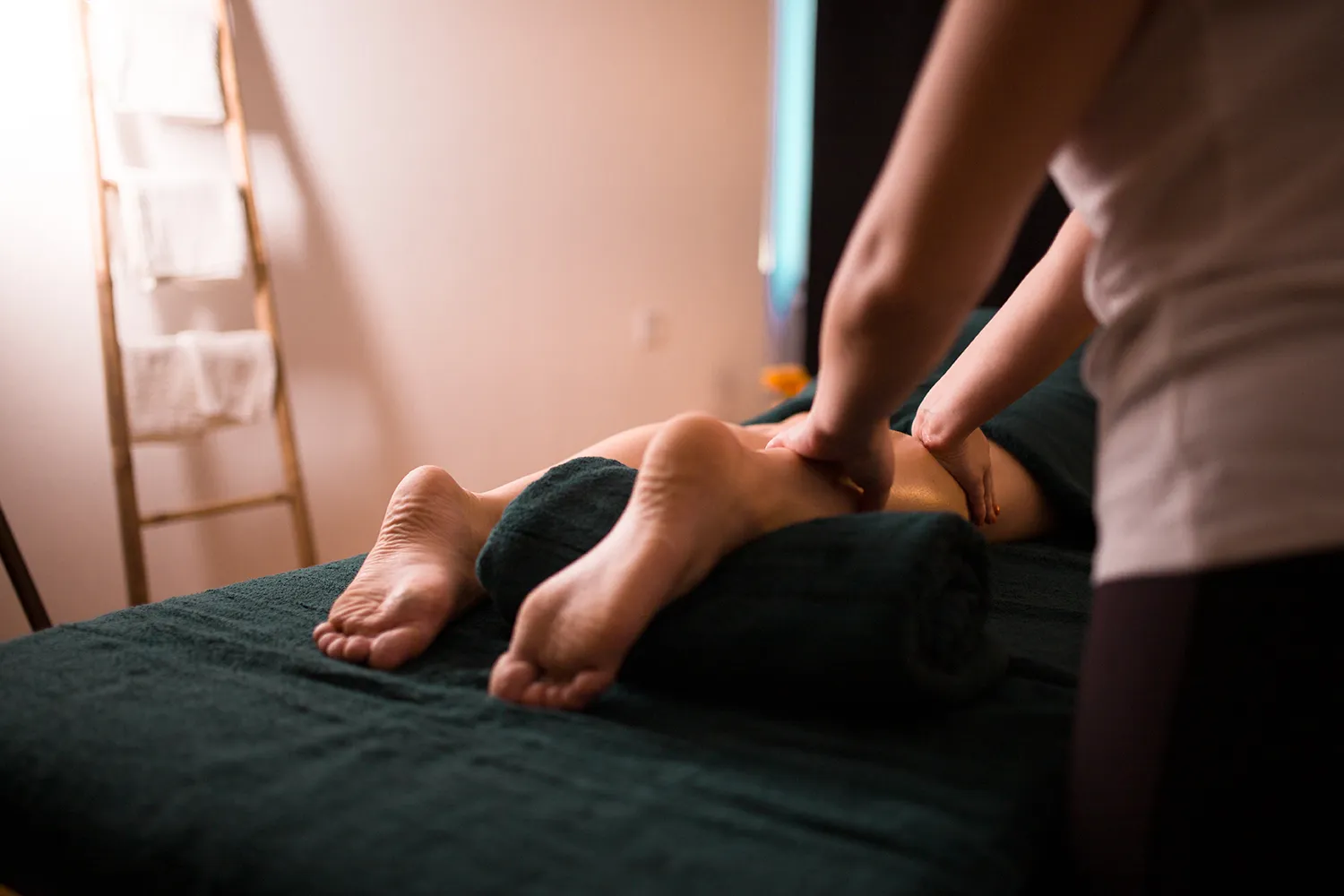Clinical Myotherapy is the gentle therapeutic manipulation of soft tissue within the body and includes techniques that target muscle, connective tissue (fascia) and ligaments.
Clinical Myotherapy utilises a broad range of manual techniques to gently treat musculoskeletal pain and dysfunction, sports injuries, back pain, neck pain, joint pain and postural imbalances, assists in injury rehabilitation, optimises athletic performance and dramatically enhances athletic recovery. Myotherapy techniques include:
- Trigger Point Therapy
- Myofascial Tension Technique
- Cupping
- Dry Needling
- Exercise prescription

A trigger point is a hypersensitive taught band of muscle fibres, commonly referred to as a ‘knot’. Trigger point therapy aims to deactivate these sensitive points, creating a relaxation and lengthening effect through the whole muscle. Blood flow is increased, as is the consequent uptake of nutrients and expulsion of metabolic waste, restoring optimum tissue health and function. Trigger point therapy is performed either through direct manual pressure or with dry needling.
The fascial, or connective tissue matrix, runs through the entire body; it envelops all soft tissue structures like a web and has varying degrees of consistency, ranging from densely packed to viscous and fluid. Fascia is the primary building block of tendons and ligaments; it runs through muscles, houses them in a stockinged sheath and provides a lubricated sliding interface between many different soft tissue structures. Myofascial tension technique manually manipulates restricted fascia (connective tissue). A gentle load is placed through the affected fascia. As the tissue softens, the therapist will slowly increase this load, sometimes utilising a long lever (joint/limb movement) until optimal movement and function are restored.
Cupping is an alternate method of performing myofascial tension technique. Instead of direct manual pressure with the therapist’s hands, vacuum suction cups are placed directly over the restricted tissue. The vacuum suction pressure gently draws the tissue upwards, restoring fascial mobility, significantly increasing blood flow, improving the tissue uptake of nutrients and oxygen, and expulsing metabolic waste.
Dry Needling is an alternate technique for deactivating trigger points. Instead of using direct manual pressure, a fine needle is inserted into the trigger point or taut band of tissue. Dry Needling is a highly effective method for treating trigger points and enables the therapist to treat multiple sites of dysfunction simultaneously. It has an analgesic effect on muscle tissue and can also help reduce inflation. Dry Needling can be sensitive upon initial insertion but is not painful and usually causes less discomfort than manual pressure to trigger points.
A variety of exercises may be prescribed to clients to assist in rehabilitation and soft tissue optimisation. All exercise prescriptions are tailored to individual needs and injury management requirements. Exercise prescriptions may include stretches, strength exercises, mobilisation exercises, and neuromuscular training. Exercise programs almost always change and evolve as improvement is made and are utilised extensively in injury rehabilitation and prevention and to optimise athletic performance.